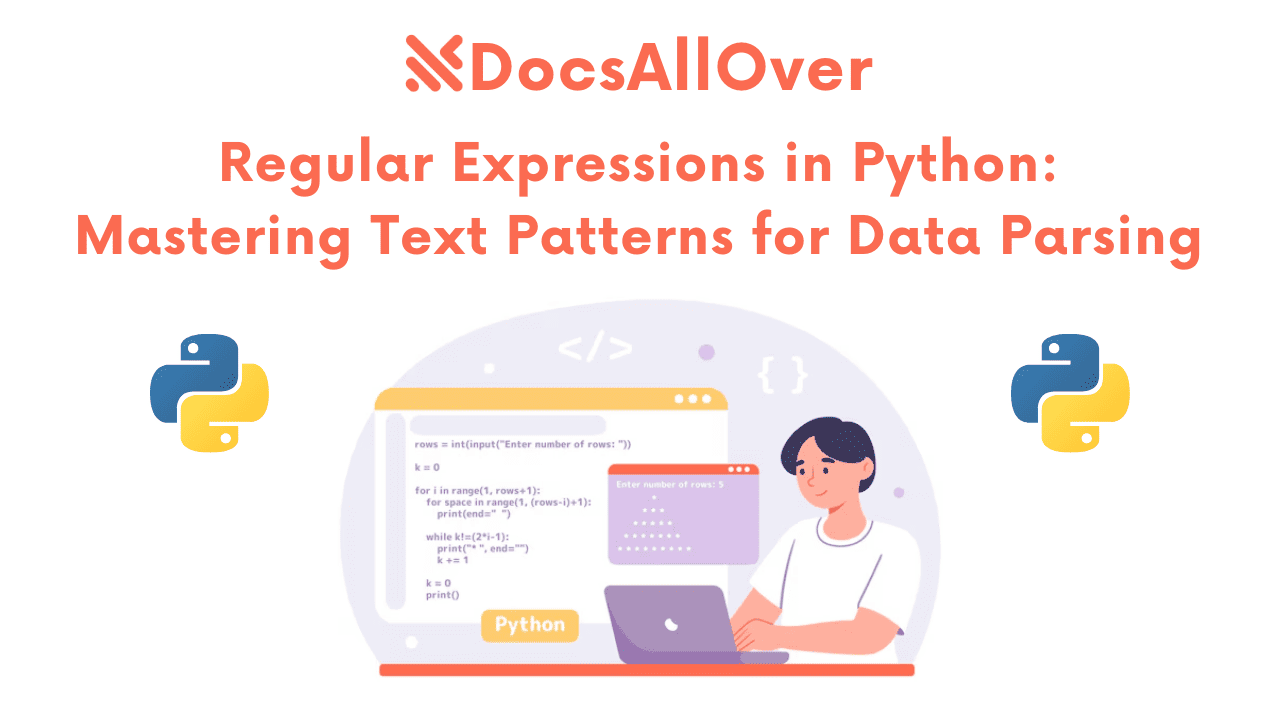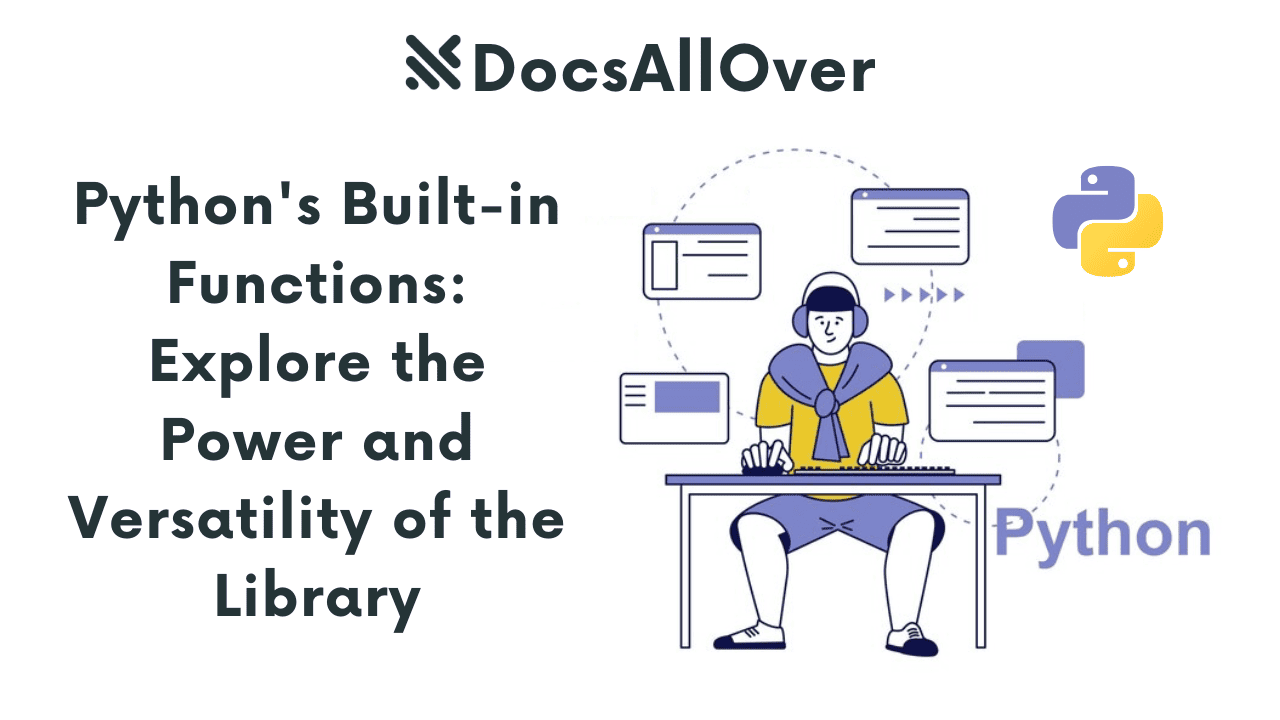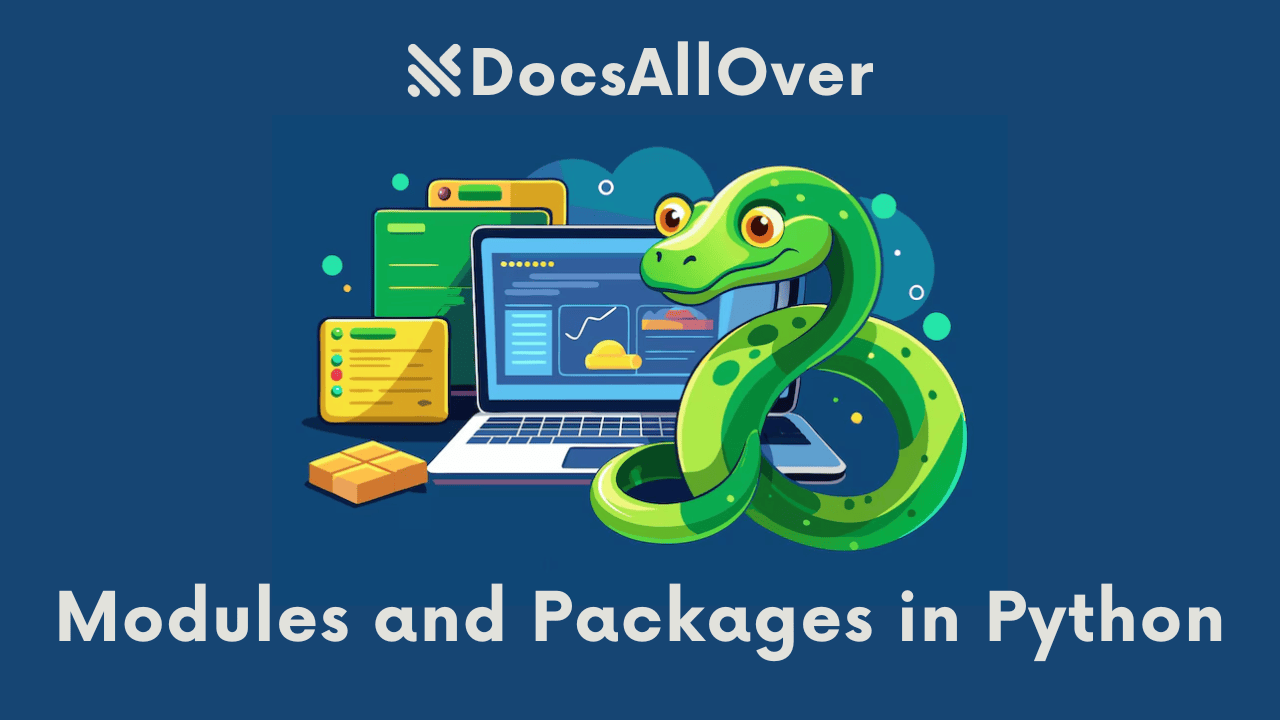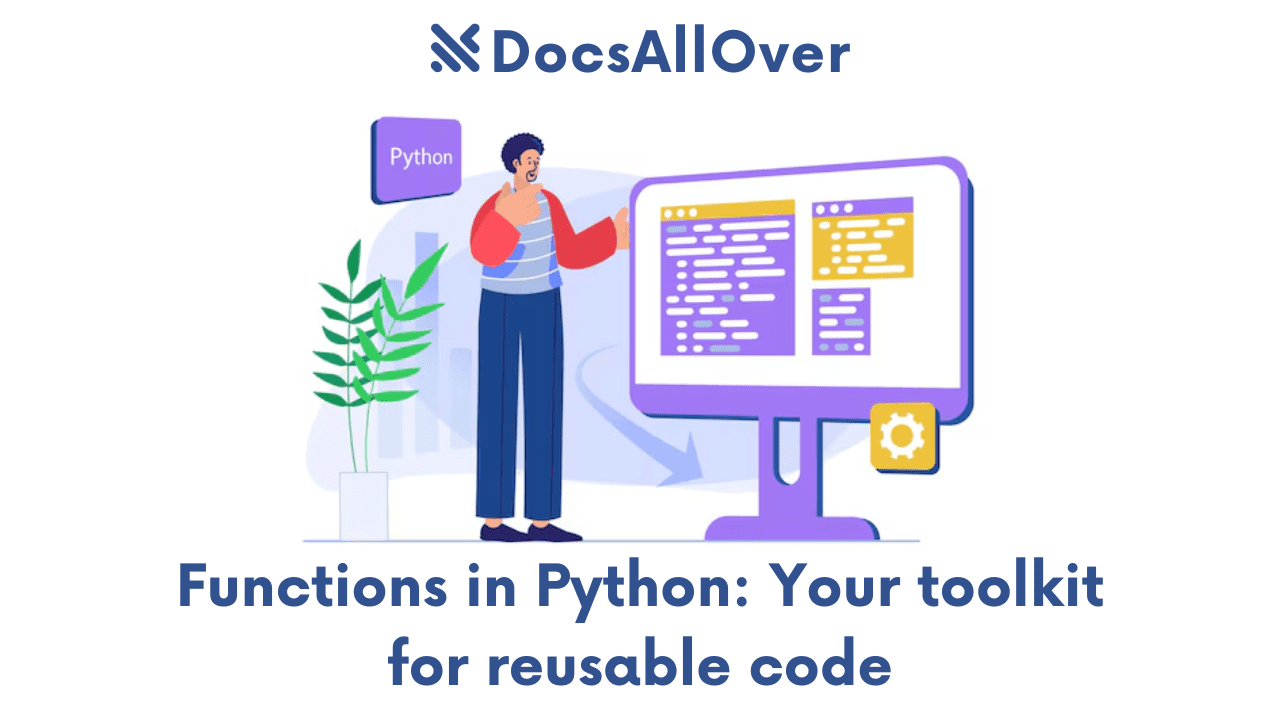Getting Started with Python: A Beginner's Guide to the Power of Python Programming
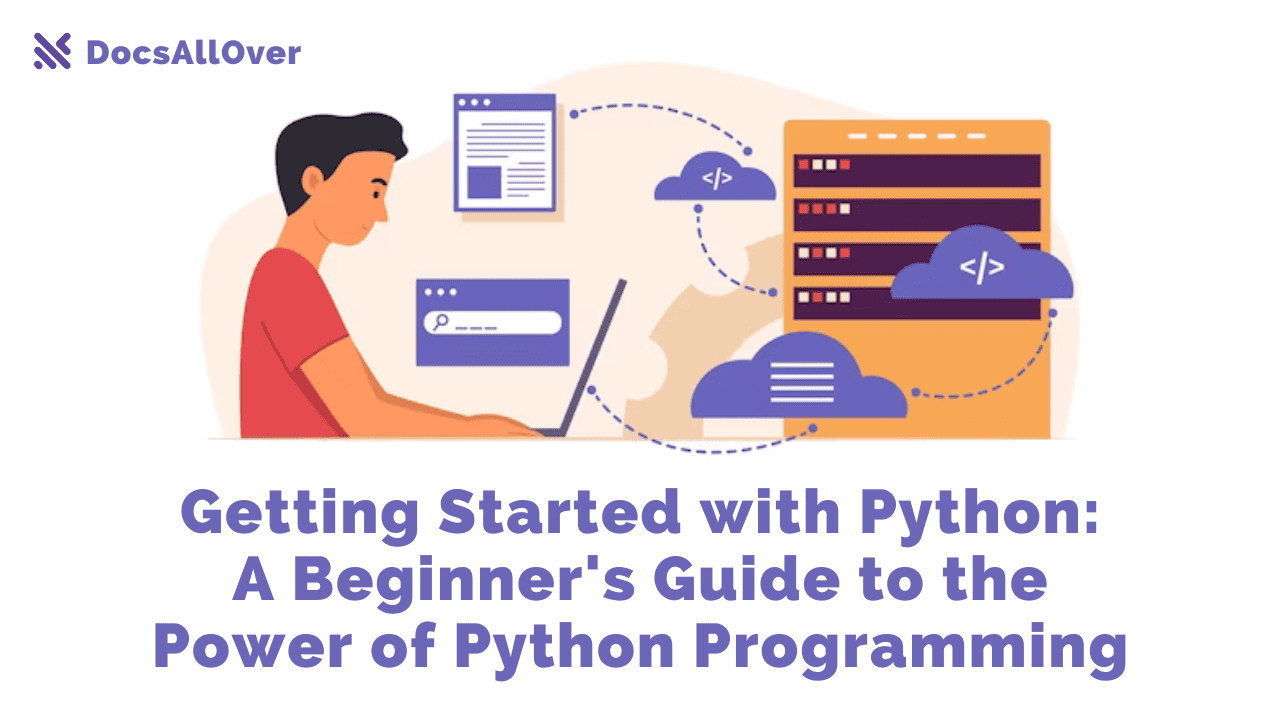
Python is a general-purpose programming language that is easy to learn and use. It is used in a wide variety of applications, including web development, data science, machine learning, and artificial intelligence.
Python is known for its simplicity and readability, making it an excellent choice for beginners who are new to programming. Its syntax is designed to be intuitive and easy to understand, allowing developers to write code that is both concise and expressive. Whether you're interested in web development, data analysis, or automation, Python has a wide range of applications that can cater to your needs.
To get started with Python, you'll need to install the Python interpreter on your computer. The official Python website provides installation packages for various operating systems, making it easy to set up Python on your machine. Once installed, you can start writing Python code using a text editor or an integrated development environment (IDE) such as PyCharm or Visual Studio Code.
Python provides a vast standard library that offers a wide range of modules and functions to simplify common programming tasks. These modules cover areas such as file handling, networking, database access, regular expressions, and more. Leveraging the power of the standard library can save you time and effort in implementing complex functionalities.
Python is a language that promotes code readability and maintainability, making it an ideal choice for beginners. Its indentation-based syntax enforces a clean and consistent coding style, which enhances code readability and reduces the likelihood of errors. Additionally, Python supports both procedural and object-oriented programming paradigms, allowing developers to structure their code in a way that suits their project's requirements.
Python's extensive standard library is a treasure trove of pre-built modules and functions that simplify common programming tasks. Whether you need to handle file operations, manipulate strings, perform mathematical calculations, or interact with databases, Python's standard library has got you covered. For more specialized tasks, Python offers a vast ecosystem of third-party libraries and frameworks that cater to various domains such as web development, data science, artificial intelligence, and more.
One of the notable features of Python is its dynamic typing system, which means you don't need to explicitly declare variable types. Python infers the variable types based on the assigned values, allowing for greater flexibility and faster development cycles. This dynamic nature also enables rapid prototyping and easy experimentation, making Python a favorite among data scientists and researchers.
Python's popularity extends beyond its simplicity and versatility. It is widely supported across different platforms and operating systems, including Windows, macOS, and Linux. This cross-platform compatibility ensures that your Python code can run seamlessly on various environments, facilitating collaboration and deployment across different systems.
Furthermore, Python has a vibrant and active community of developers who contribute to its growth and development. This thriving community means that you can find extensive documentation, tutorials, and resources to aid your learning journey. It also means that you can seek help from fellow developers through forums, mailing lists, and online communities, making Python an inclusive and supportive language to learn and work with.
If you are new to programming, Python is a great language to start with. It has a simple syntax and a large community of users and developers who are willing to help beginners.
Why learn Python?
There are many reasons to learn Python. Here are a few:
- Python is a versatile language that can be used for a wide variety of tasks.
- Python is easy to learn and use, even for beginners.
- Python has a large community of users and developers who are willing to help beginners.
- Python is free and open source, so you can use it without any restrictions.
How to get started with Python
The best way to get started with Python is to install it on your computer. You can download the Python installer from the official Python website.
Once you have installed Python, you can start learning about the language by reading books, taking online courses, or watching tutorials. There are many resources available online and in libraries to help you learn Python.
Here are some tips for getting started with Python:
- Start with the basics. Before you can start building complex applications, you need to learn the basics of Python, such as variables, data types, operators, and control flow.
- Practice regularly. The best way to learn Python is by practicing regularly. Try to write some Python code every day, even if it's just a few lines. You can start by writing simple programs, such as a "Hello, world!" program. As you become more comfortable with Python, you can start writing more complex programs.
- Don't be afraid to ask for help. If you get stuck, don't be afraid to ask for help from a friend, or online forum. There are many people who are willing to help beginners learn Python.
Resources for learning Python
Here are some resources that you may find helpful for learning Python:
- Official Python Tutorial: https://docs.python.org/3/tutorial/
- Learn Python: https://www.learnpython.org/
- Talk Python to Me: https://talkpython.fm/
- Python Crash Course: https://ehmatthes.github.io/pcc/
- Real Python: https://realpython.com/
Once you have a good understanding of the basics of Python, you can start learning about more advanced topics, such as object-oriented programming, data science, and machine learning. There are many resources available online and in libraries to help you learn about these topics.
Additional suggestions for learning Python:
- Find a community. There are many online and offline communities where you can connect with other Python learners and developers. Joining a community can be a great way to learn from others, get help when you need it, and stay motivated.
- Contribute to open source projects. One of the best ways to learn Python is by contributing to open source projects. This can be a great way to gain experience working on real-world projects and to learn from other developers.
- Build something. The best way to learn Python is by building something. Think of a project that you are interested in and start building it. This could be anything from a simple website to a complex machine learning application.
Learning Python can be challenging, but it is also very rewarding. By following the tips above, you can set yourself up for success.
Benefits of Python
- Python is open source.
- Python has a simple and easy-to-learn syntax.
- Python has extensive support libraries for data science, machine learning, data analytics, and more.
- Python is very user-friendly and has rich built-in data structures.
- Python supports dynamic high-level data typing, which reduces the length of support code that is needed.
- Python has a clean object-oriented design.
Applications of Python
Web development with Python
Python is a popular programming language for web development. It is easy to learn and use, and it has a large and active community. Python is also very versatile, and it can be used to build a wide variety of web applications, from simple websites to complex web applications.
Benefits of using Python for web development
There are many benefits to using Python for web development, including:
- Easy to learn and use: Python is a relatively easy programming language to learn, even for beginners. It has a simple syntax and is very readable.
- Versatile: Python can be used to build a wide variety of web applications, from simple websites to complex web applications.
- Large and active community: Python has a large and active community of developers. This means that there are many resources available to help you learn Python and to solve problems that you may encounter.
- Scalable: Python applications can be scaled to handle large amounts of traffic.
- Secure: Python applications can be made very secure.
Popular Python web frameworks
- Django: Django is a full-stack Python web framework. It is known for its speed, scalability, and security.
- Flask: Flask is a micro-framework for Python. It is lightweight and easy to use.
- Pyramid: Pyramid is a lightweight Python web framework that is highly customizable.
- TurboGears: TurboGears is a full-stack Python web framework that is known for its flexibility and scalability.
Scientific Computing with Python
Python is a high-level programming language that is widely used in the scientific community for scientific computing. It is a general-purpose language that is easy to learn and use, and it has a large number of scientific libraries that make it ideal for a wide range of scientific tasks.
Why Python for Scientific Computing?
There are several reasons why Python is a good choice for scientific computing:
- It is easy to learn and use, even for beginners.
- It has a large number of scientific libraries that make it easy to perform a wide range of scientific tasks.
- It is open source and free to use.
- It is portable and can be used on a variety of platforms, including Windows, Linux, and macOS.
Popular scientific libraries for Python
- NumPy: A library for scientific computing with Python.
- SciPy: A library for scientific computing with Python, including functions for statistics, optimization, and signal processing.
- Matplotlib: A library for data visualization with Python.
- Pandas: A library for data analysis and manipulation with Python.
Applications of Scientific Computing with Python
Python is used in a wide variety of scientific applications, including:
- Physics: Python is used for physics simulations, data analysis, and visualization.
- Chemistry: Python is used for chemistry simulations, data analysis, and visualization.
- Biology: Python is used for bioinformatics, data analysis, and visualization.
- Data science: Python is used for data cleaning, data analysis, and machine learning.
- Engineering: Python is used for engineering simulations, data analysis, and visualization.
Getting Started with Scientific Computing in Python
To get started with scientific computing in Python, you will need to install Python and the necessary scientific libraries. You can install Python from the official Python website. Once you have installed Python, you can install the necessary scientific libraries using a package manager such as pip.
Once you have installed Python and the necessary scientific libraries, you can start writing Python code for scientific computing. There are many resources available online and in books to help you learn how to write Python code for scientific computing.
Machine learning with Python
Machine learning is a type of artificial intelligence (AI) that allows computers to learn without being explicitly programmed. In other words, machine learning algorithms can learn from data and improve their performance over time without being explicitly told what to do.
Benefits of using Python for machine learning
- Easy to learn: Python is a relatively easy language to learn, even for beginners with no prior programming experience.
- Powerful libraries: Python has a wide range of libraries and tools for machine learning, such as NumPy, SciPy, and scikit-learn. These libraries make it easy to perform common machine learning tasks, such as data preprocessing, feature engineering, and model building.
- Large community: Python has a large and active community of developers and users. This means that there are many resources available to help you learn Python and machine learning, and you can easily get help if you get stuck.
Machine learning algorithms
Applications of machine learning with Python
Machine learning is used in a wide variety of applications, including:
- Web development: Machine learning can be used to improve the performance of web applications, such as by recommending products to customers or detecting fraud.
- Scientific computing: Machine learning can be used to analyze scientific data and make predictions.
- Business intelligence: Machine learning can be used to analyze business data and identify trends and patterns.
- Medical diagnosis: Machine learning can be used to develop systems that can diagnose diseases and recommend treatments.
- Natural language processing: Machine learning can be used to develop systems that can understand and process human language.
Machine learning is a powerful tool that can be used to solve a wide variety of problems. Python is a popular programming language for machine learning because it is easy to learn and use, and it has a wide range of libraries and tools for machine learning.
If you are interested in learning machine learning, Python is a great place to start. There are many resources available online and in libraries to help you learn Python and machine learning.
Artificial Intelligence
Python is a popular language for artificial intelligence (AI) development. It is easy to learn and use, and it has a wide range of libraries and tools that are specifically designed for AI development.
Python is used in a variety of AI applications
- Machine learning: Python is used to develop and train machine learning models. There are many popular machine learning libraries available for Python, such as TensorFlow, PyTorch, and scikit-learn.
- Natural language processing (NLP): Python is used to develop NLP applications, such as chatbots, machine translation, and text summarization. There are many popular NLP libraries available for Python, such as NLTK and spaCy.
- Computer vision: Python is used to develop computer vision applications, such as image recognition and object detection. There are many popular computer vision libraries available for Python, such as OpenCV and PyTorch.
Data Science
Python is also a popular language for data science. It is easy to use for data manipulation and analysis, and it has a wide range of libraries and tools that are specifically designed for data science.
Variety of data science applications
- Data cleaning and preparation: Python is used to clean and prepare data for analysis. There are many popular data cleaning and preparation libraries available for Python, such as Pandas and NumPy.
- Exploratory data analysis (EDA): Python is used to perform EDA on data. There are many popular EDA libraries available for Python, such as Matplotlib and Seaborn.
- Statistical analysis: Python is used to perform statistical analysis on data. There are many popular statistical analysis libraries available for Python, such as SciPy and Statsmodels.
Data Analytics
Python is also a popular language for data analytics. It is easy to use for data visualization and reporting, and it has a wide range of libraries and tools that are specifically designed for data analytics.
Python is used in a variety of data analytics applications, including:
- Data visualization: Python is used to create data visualizations, such as charts and graphs. There are many popular data visualization libraries available for Python, such as Matplotlib and Seaborn.
- Data reporting: Python is used to create data reports. There are many popular data reporting libraries available for Python, such as Pandas and Dash.
Game Development
Python is also a popular language for game development. It is easy to use and has a wide range of libraries and tools that are specifically designed for game development.
Game development applications
- 2D and 3D game development: Python can be used to develop 2D and 3D games. There are many popular game development libraries available for Python, such as Pygame and Panda3D.
- Mobile game development: Python can be used to develop mobile games for iOS and Android devices. There are many popular mobile game development libraries available for Python, such as Kivy and Pyjnius.
Scripting and Automation
Python is also a popular language for scripting and automation. It is easy to use and has a wide range of libraries and tools that are specifically designed for scripting and automation.
Python is used in a variety of scripting and automation applications, including:
Web automation
Python can be used to automate web-based tasks, such as scraping data from websites and filling out forms. There are many popular web automation libraries available for Python, such as Selenium and Scrapy.
System administration
Python can be used to automate system administration tasks, such as managing files and processes. There are many popular system administration libraries available for Python, such as Ansible and Chef.
Python's capabilities are not limited to standalone scripts and command-line tools. It is also well-suited for building web applications, thanks to frameworks like Django, Flask, and Pyramid. These frameworks provide a solid foundation for developing scalable and robust web applications, handling tasks such as routing, database integration, and user authentication. Python's web development frameworks empower developers to build everything from simple websites to complex web applications with ease.
Let's take a look at a few programming examples to understand how Python works:
1. Hello, World!:
This is the traditional "Hello, World!" program, which is often the first program beginners write in any programming language. It simply prints the text "Hello, World!" to the console.
2. Variables and Data Types:
In this example, we declare variables to store different types of data such as strings, integers, floats, and booleans. We then print the values of these variables to the console.
3. Conditional Statements:
Here, we use an if-else statement to check the value of the variable `x`. If `x` is greater than 5, it prints a corresponding message; otherwise, it prints a different message.
4. Loops:
This example demonstrates a for loop that iterates over a list of fruits and prints each fruit on a separate line.
Python's simplicity, extensive community support, and rich ecosystem of third-party libraries make it an excellent choice for beginners and experienced developers alike. It offers countless opportunities for web development, data analysis, machine learning, automation, and more.
As you continue your Python journey, you'll discover more advanced concepts such as functions, classes, modules, and libraries that will further enhance your programming capabilities. Python's versatility and easy-to-understand syntax make it a language that is both enjoyable to learn and powerful to work with.
So, why wait? Get started with Python today and unlock a world of endless possibilities in the realm of programming.
